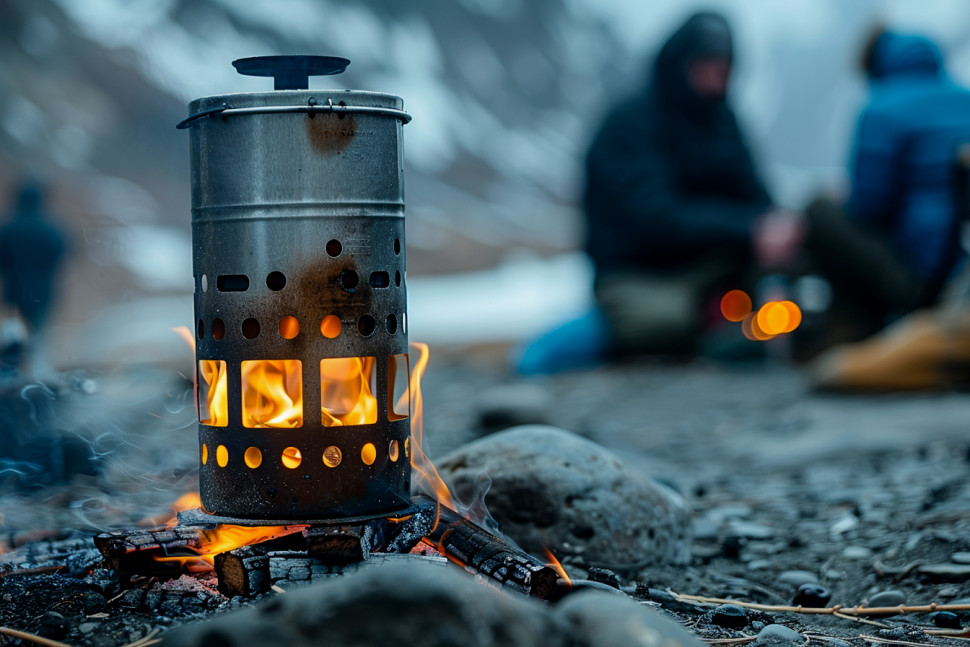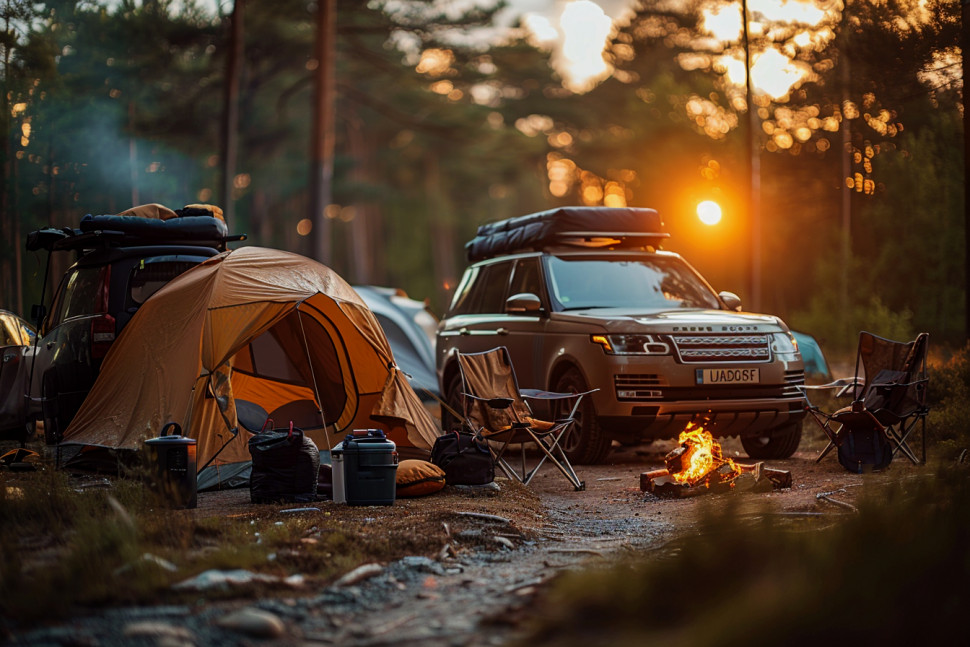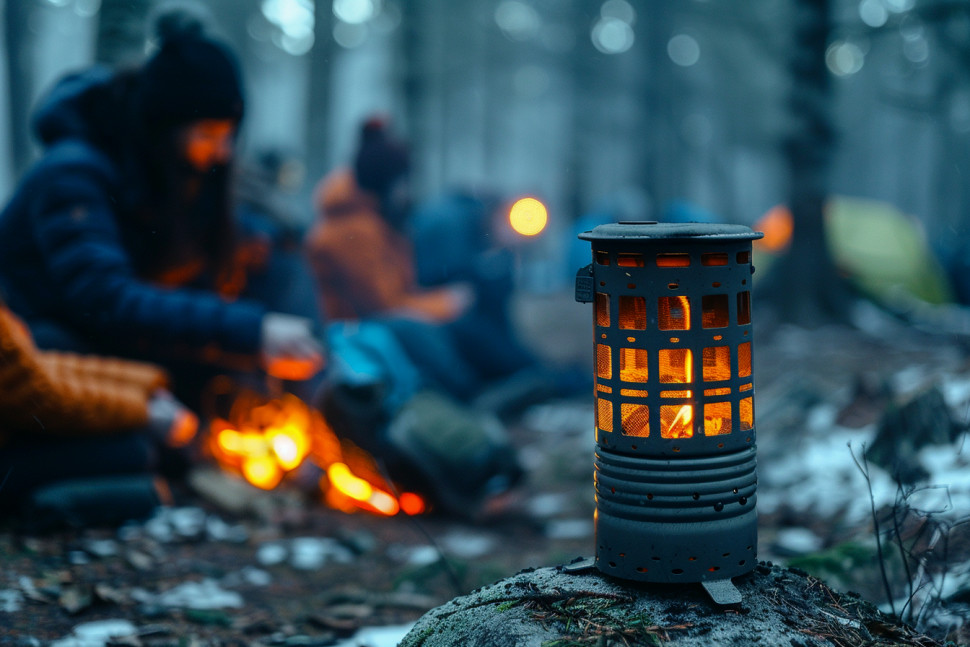Cooking in the Wild: Top Tips for Selecting the Ideal Camping Stove

Key Takeaways
- Consider the type of camping you'll be doing - backpacking, car camping, or base camping - to determine the best stove for your needs
- Fuel type is a crucial factor, with options including canister gas (propane/butane), liquid fuel (white gas), alcohol, solid fuel tablets, and wood
- Canister stoves are the most popular choice for their ease of use, compact size, and fast boil times, but may struggle in cold temperatures
- Liquid fuel stoves are versatile and perform well in all conditions, but require more maintenance and have a learning curve
- Alternative fuel stoves like alcohol burners and wood stoves are lightweight and eco-friendly, but have slower cook times and less temperature control
- Consider factors like weight, size, simmer control, wind resistance, and ease of use when selecting your ideal camping stove
- Don't forget essential accessories like a windscreen, fuel bottle, and repair kit to keep your stove running smoothly in the backcountry
Introduction: The Importance of a Reliable Camping Stove
Picture this: you've just hiked miles into the backcountry, set up camp beside a serene alpine lake, and are ready to reward yourself with a hot meal under the stars. But when you go to fire up your trusty camping stove, you realize you're out of fuel, or worse - it's not working at all. Suddenly, your dream trip has turned into a nightmare of cold, uncooked food and a rumbling stomach.
A reliable camping stove is an essential piece of gear for any outdoor adventure, whether you're a hardcore backpacker or a weekend car camper. Not only does it provide a convenient way to cook meals and boil water for coffee or washing up, but it can also be a lifeline in emergency situations when you need to stay warm and nourished.
But with so many different types of camping stoves on the market - from ultralight canister models to versatile multi-fuel systems - it can be overwhelming to choose the best one for your needs. In this ultimate guide, we'll break down the key factors to consider when selecting a camping stove, so you can cook up a storm on your next wild adventure.

Types of Camping: Backpacking vs. Car Camping vs. Base Camping
The first step in choosing the perfect camping stove is to consider the type of camping you'll be doing most often. Are you a minimalist backpacker who counts every ounce, a car camper who prioritizes comfort and convenience, or a base camper who sets up a luxurious home away from home? Each style of camping has different stove requirements.
Backpacking Stoves
When you're carrying everything on your back, weight and size are the top priorities for a backpacking stove. You'll want a compact, lightweight model that packs down small and won't weigh you down on the trail. Canister stoves and alternative fuel stoves like alcohol burners are popular choices for backpackers.
Car Camping Stoves
If you're driving to your campsite, you have more flexibility in terms of stove size and weight. Two-burner propane stoves are a classic choice for car campers, offering plenty of cooking space and simmer control for gourmet camp meals. You can even bring along a grill or griddle attachment for added versatility.

Base Camping Stoves
For longer trips or group camping, a base camping setup might include a larger freestanding stove with multiple burners and a generous cooking area. Weight is less of a concern, so you can opt for a durable, high-output model that can handle all your cooking needs.
Fuel Types: Pros and Cons
One of the most important decisions when selecting a camping stove is the type of fuel it uses. Each fuel has its own advantages and disadvantages in terms of availability, ease of use, performance, and eco-friendliness. Let's break down the most common options.

Canister Gas (Propane/Butane)
Canister stoves that run on a mix of propane and butane are by far the most popular choice for camping, and for good reason. They're incredibly easy to use - just screw on the canister, turn the valve, and light the burner. Canister fuel is widely available at outdoor stores and even some gas stations, and the stoves themselves are compact, lightweight, and low-maintenance.
However, canister stoves do have some limitations. They can struggle in cold temperatures or at high elevations, as the pressure in the canister drops. And once you start a canister, you can't reseal it, so you'll need to use up all the fuel before disposing of it properly.
Liquid Fuel (White Gas)
Liquid fuel stoves, also known as white gas stoves, are the workhorses of the camping world. They run on a refillable fuel bottle filled with white gas, which is a highly refined form of gasoline. These stoves are incredibly versatile - they perform well in all weather conditions, at high altitudes, and can even run on alternative fuels like kerosene or unleaded gas in a pinch.
The downside of liquid fuel stoves is that they require more maintenance and have a steeper learning curve than canister models. You'll need to prime the stove before each use, and occasionally clean the fuel line and jets to keep it running smoothly. They're also generally heavier and bulkier than canister stoves.
Alternative Fuel Stoves
For the eco-conscious or ultralight backpacker, alternative fuel stoves offer a unique set of benefits. Alcohol stoves run on denatured alcohol, which is cheap, widely available, and burns cleanly. Wood-burning stoves allow you to use natural fuel sources like twigs and pine cones, making them a great choice for long-distance hikers or survival situations.
However, alternative fuel stoves do have some drawbacks. They generally have slower boil times and less temperature control than canister or liquid fuel models, and may be banned during fire restrictions. Solid fuel tablet stoves are lightweight and compact, but can be expensive and leave a sticky residue on cookware.

Other Factors to Consider
Beyond fuel type, there are several other key features to look for when choosing a camping stove. Here are some factors to keep in mind:
| Factor | What to Look For |
|---|---|
| Weight | Lightweight materials like titanium or aluminum for backpacking; weight less of a concern for car camping |
| Size | Compact and packable for backpacking; larger cooking area for group camping or elaborate meals |
| Simmer control | Ability to adjust flame for precise temperature control, especially for cooking more than just boiling water |
| Wind resistance | Windscreens or built-in wind protection to maintain flame in breezy conditions |
| Ease of use | Simple, intuitive controls and minimal setup time |
| Durability | Sturdy construction and quality materials to withstand rugged use in the backcountry |
| Compatibility | Make sure your cookware and fuel type are compatible with the stove |
Essential Accessories for Your Camping Stove
To get the most out of your camping stove, don't forget these essential accessories:
- Fuel: Make sure you have enough fuel for your trip, whether it's canister gas, white gas, or an alternative fuel source.
- Windscreen: A windscreen can help shield your flame from the breeze and improve fuel efficiency.
- Repair kit: Pack a small repair kit with spare parts like O-rings, jet cleaners, and a multi-tool in case of any stove malfunctions in the field.
- Lighters or matches: Always bring multiple fire-starting options in case one fails.
- Cookware: Choose lightweight, durable pots and pans that are compatible with your stove and nest together for compact packing.
Stove Safety Tips
Cooking with a camping stove does come with some inherent risks, so it's important to always follow proper safety guidelines:
- Only operate your stove outside in a well-ventilated area, never inside a tent or enclosed space.
- Keep flammable materials like clothing, sleeping bags, and tents away from the stove.
- Always supervise the stove while in use, and never leave it unattended.
- Let the stove cool completely before packing it away.
- Store fuel canisters or bottles in a separate location from your food and other scented items to avoid attracting wildlife.
- Follow Leave No Trace principles and pack out any empty fuel canisters or ash from wood-burning stoves.
Choosing the right camping gear
Selecting the right camping gear is crucial for a successful outdoor adventure. From choosing the right sleeping bag for comfort and warmth to selecting the best camping stove for cooking meals, each item plays a vital role. Consider factors like weight, durability, and ease of use when picking out your gear. Research different brands and read reviews to ensure you're investing in quality equipment. With the right camping gear, you can enjoy a safe and enjoyable experience in the great outdoors.
Essential Camping Gear Checklist: Must-Have Items for Your Outdoor Adventure
When preparing for an outdoor adventure, having the right camping gear is essential. A sturdy tent, sleeping bag, and camping stove are must-have items for a comfortable experience. Additionally, packing a first aid kit and water purifier can ensure your safety and health in the wilderness. Don't forget to bring a reliable flashlight or headlamp for navigating in the dark. With these essential items in your camping gear checklist, you'll be well-equipped for your outdoor excursion.
Conclusion: Choosing the Best Camping Stove for Your Adventures
With so many different types of camping stoves on the market, it can be overwhelming to choose the perfect one for your needs. But by considering factors like the type of camping you'll be doing, your preferred fuel source, and key features like weight, size, and simmer control, you can narrow down your options and find the ideal stove for your adventures.
Remember, a reliable camping stove is an investment in your outdoor experience. It's the tool that will fuel your body and warm your spirits after a long day on the trail, and create countless memories of delicious meals shared under the stars. So take the time to research your options, read reviews from other campers, and choose a stove that will be your trusty companion on all your wild cooking adventures.
Happy trails, and bon appétit!
